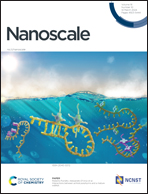Potential application of bismuth oxyiodide (BiOI) when it meets light
Abstract
Bismuth oxyiodide (BiOI) is a kind of typical two-dimensional (2D) material that has been increasingly developed alongside other 2D materials such as graphene, MXenes, and transition-metal dichalcogenide. However, its potential applications have not been widely whispered compared to those of other 2D materials. Using its distinctive properties, BiOI can be used for various applications, especially when it meets sunlight and other light-related electromagnetic waves. In this present review, we discuss the developments of BiOI and challenges in the applications for photodetector and light-assisted sensors, photovoltaic devices, optoelectronic logic devices, as well as photocatalysts. We start the discussion with a basic understanding and development of BiOI, crystal structure, and its properties. The synthesis and further development, such as green synthesis and its challenges in the synthesis-suited industry, as well as device integration, are also explained together with a plausible strategy to enhance the feasibility of BiOI for those various applications. We believe that the provided discussion and perspectives will not only promote BiOI to be one of the highly considered 2D materials but can also assist recent graduates in any materials science discipline and inform the senior scientists and industrial-based stakeholders of the latest advances in bismuth oxide and mixed-anion compounds.

- This article is part of the themed collection: Recent Review Articles


 Please wait while we load your content...
Please wait while we load your content...